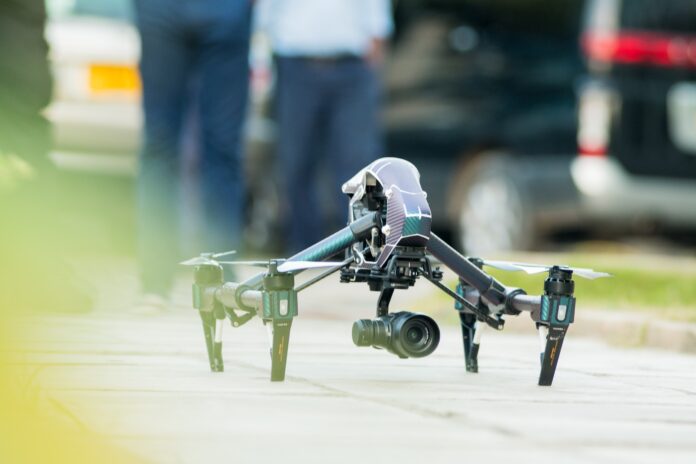How Drones Aid in Accident Investigations
![]()
Guest post by Indiana Lee
Drones are now a familiar part of our skies, and we have begun to explore their potential to assist our emergency services personnel. Police are introducing them in law enforcement activities, and they are helping rescue teams mount an effective response following natural disasters. One area that unmanned aerial vehicles (UAVs) are finding early applications are in accident investigations and prevention.
While we’re used to seeing drones as tools for photography and fun, it’s useful to look a little deeper into their contributions in this vital area. What elements make them particularly suited for accident investigation, and how are agencies taking their first forays into UAV use? As our technological landscape continues rapidly developing, how can we expect drones to meet the challenges?
Investigative Tools
We know that drones have a variety of uses, but what onboard technology and associated applications are useful for accident investigation? The best way to start is by delving a little into what the process entails. One of the key areas of use is in accident reconstruction, which aims to replicate the conditions of incidents — motor accidents, plane crashes, and even bridge collapses and crane failures — in fine detail, down to the environmental aspects. This allows investigators to closely examine the circumstances, determine causes, and to see in detail who, if anyone, is at fault.
Drone technology in these circumstances can be used for the following:
- Topographical Mapping. Recreating an accurate model of the landscape in which an accident took place requires replication of not just the vehicles and buildings, but also the road surfaces and natural obstructions. Drones fitted with laser scanning technology can be programmed to follow a flight path around an accident scene and capture data which can be analyzed to recreate surface areas and environmental conditions.
- 3D Modeling. Camera equipment fitted to drones helps make them versatile, maneuverable tools in accident reconstruction. Drones can capture images of a scene from multiple angles, and, when coupled with structure-from-motion sensors, can then be used to create a 3D model of all elements in the area, allowing investigators to examine objects from all angles. One recent study showed that drones could capture this data up to 30 times faster than Terrestrial Laser Scanning techniques.
Drone technology can also play a part in making certain that forensic investigators are able to safely gather all the data needed from the scene of an incident. The speed and maneuverability of UAVs mean that they can make excellent surveillance tools. The real-time images captured by drone pilots can provide police and support units with information on oncoming traffic and advanced information on potential problematic situations.
Key Adopters
Drones are useful tools, but they are only effective if key agencies fully embrace them. This is not just important in encouraging widespread usage. Showing effective use helps to build credibility in drones and may affect how such evidence is received by officials and juries. It can also result in additional exploration which will lead to innovation and adoption of other useful technologies. So who is currently using UAVs for investigations?
In the U.S., it is often down to individual law enforcement agencies to find spaces in their budgets to use drones or to team up with drone manufacturers. In July 2019, Maryland State police began testing four drones in their crash investigation team. The state arranged for twelve troopers to be certified to pilot the UAVs. A police spokesperson has claimed a significant reduction in time spent collecting evidence at the scene as a result.
The National Transportation Safety Board (NTSB) — the independent federal agency tasked with investigating transport accidents and making preventative recommendations — has been using UAVs since 2006. They’ve embraced the technology, not only for traditional road crashes but also to investigate aviation wreckages. The agency has reported that drones not only allow them to gather data efficiently, but they also access dangerous or difficult to reach crash sites, such as in swamps or around hazardous chemical spillages.
Looking Forward
One of the most important roles of accident investigation is helping officials to understand how they can be prevented in the future. The work undertaken by drones in investigations can provide scanning data which can highlight hazardous areas of roads and help government officials and city planners to make changes that reduce risks. Drones can go even further in preventing accidents.
Traffic police can deploy UAVs to monitor road conditions in real-time, helping them to make adjustments to traffic control. This live aerial camera footage could also be used to identify vehicles that are moving erratically due to a driver who is intoxicated or drowsy, of which the latter contributed to 91,000 accidents in 2017 alone. Some fleets are already using driver management software to alert drivers when their driving suggests drowsiness, but drone footage could provide police with an extra precautionary tool to deploy personnel to prevent the worst from occurring.
Looking a little more distantly, the introduction of 5G networks could help make autonomous vehicles practical. This is expected to have a variety of effects upon our lives, from shorter commute times to reducing road accidents and the resulting fatalities. However, we will also require tech solutions to prevent accidents. As drones develop with longer battery life and more advanced sensor equipment, they could play an important part in helping to monitor and control the driverless roadways in the years to come.
Conclusion
Accident investigations rely on accurate, thorough data collection to reveal the causes of crashes and to prevent them from occurring in the future. Drones are increasingly being used by investigators for their maneuverability and high definition scanning and mapping capabilities. As technology evolves, they have the potential to become an essential tool in saving lives.
Cover image: Photo by K15 Photos from Pexels
